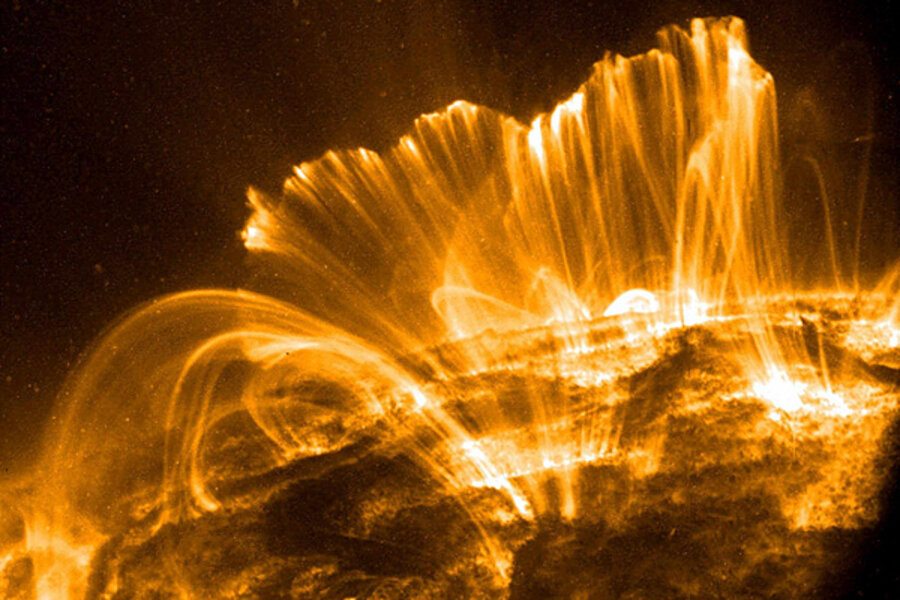Did sun eruption spawn zombie satellite?
Loading...
Scientists have identified a massive eruption from the sun in April that reached all the way to Earth and may be responsible for knocking out a satellite, creating a so-called "zombie satellite."
The huge explosion of plasma and magnetic energy, called as a coronal mass ejection (CME), occurred on April 3 and was observed by NASA's sun-watching STEREO spacecraft, according to the U.S. Naval Research Laboratory (NRL). The laboratory released new images of the solar storm last week.
The solar storm appears to have disabled the Intelsat communications satellite Galaxy 15, NRL officials said. Galaxy 15 lost contact with its ground controllers on April 5 and has been drifting around Earth ever since.
Solar storms are known to put satellites at risk. The charged particles in a storm can short out electrical equipment.
The observations suggest the coronal mass ejection flung material away from the sun at a phenomenal 1,000 kilometers per second. The solar eruption was moving at 2.2 million mph (3.6 million kph) while it was still close to the sun on April 3. It then slowed down to about 700 kilometers per second (1.5 million mph or 2.5 million kph) when it reached Earth on April 5.
There is an odd twist to the Galaxy 15 satellite failure. While the satellite has stopped communicating with its ground control center, its C-band telecommunications payload (which provided broadcast services to customers) is stuck on, earning it the "zombie satellite" nickname.
"Coronal mass ejections, or CMEs, are powerful eruptions of plasma and magnetic energy from the sun's outer atmosphere, or corona," NRL officials wrote in the July 7 statement. "When these sudden outbursts are directed toward Earth, they can have both breathtakingly beautiful and potentially damaging effects." [Amazing new sun photos.]
The study of the April 3 coronal mass ejection event was performed using NASA's Solar Terrestrial Relations Observatory (STEREO), a set of twin spacecraft on opposite sides of Earth that continuously watch the sun in what produces a stereo view, due to the wide separate of the probes in space.
The unique lateral views provided by STEREO were ideal for studying the kinematics and morphology of the developing event, said Russell Howard, the STEREO mission's principal investigator at the Naval Research Laboratory.
Three-dimensional reconstruction of the evolving cloud of electrified gas showed its form to be a crescent-shaped "flux rope" with a shock wave driven in front.
Prior awareness that the coronal mass ejection was headed straight for Earth came from the NRL-developed coronagraph aboard the SOHO solar observatory, which is located at a spot between the Earth and sun. That Large Angle Coronograph-Spectrograph (LASCO) instrument on SOHO observed a "halo" around the sun formed by the expanding and approaching solar eruption, NRL officials said.
Meanwhile, the now-aimless electronic signal from Galaxy 15 has forced other communications satellites to conduct evasive maneuvers from time to time to avoid signal interference. But the chances of the Galaxy 15 spacecraft hitting another satellite are so remote, they are non-existent, Intelsat officials have said. This month, Galaxy 15 will be flying near two other Intelsat satellites (Galaxy 13 and Galaxy 14).





